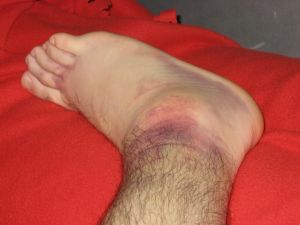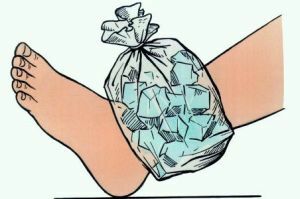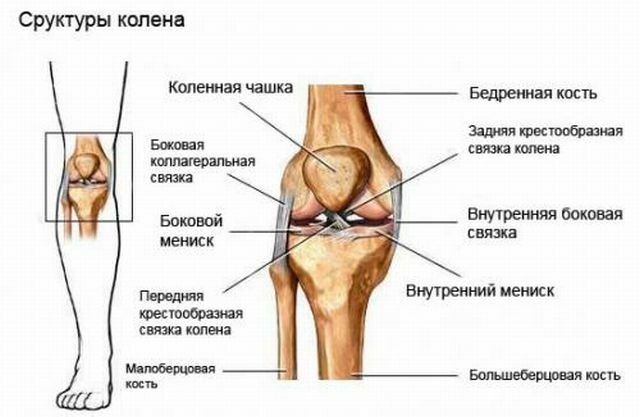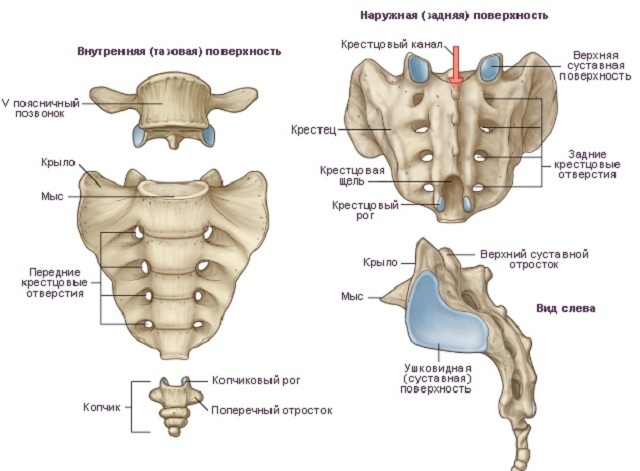 The human ankle in the whole musculoskeletal system plays a key role, since it "takes over" all the load during walking.
The human ankle in the whole musculoskeletal system plays a key role, since it "takes over" all the load during walking.
A person should follow signs of fatigue, which are expressed in pain in the foot.
Excessive strain on the legs can lead to ligament sprains or tearing, which requires much more recovery time.
Anatomy of the foot: the key function of the ligaments
- Folk methods
Anatomy of the foot:the key function of the ligaments of the
Human foot consists of 26 bones. The union of the two bones forms the joint.
For a certain "maintenance" of their coupling there are bundles that are strong. Specialists note that their thickness and strength is much better in terms of indicators in comparison with other ligaments located in the human body.
This strength is due to daily use during movements and walking. The most important and easily traumatable ligament is deltoid.
It is located on the inner surface of the foot and connects the three main bones - tibial, talus and heel.
Since birth, the strength of the ligaments is not different and has one structure. Only on the foot later there is a kind of strengthening.
Similar moments can not be attributed to positive aspects, since strength leads to their rupture or tearing, while stretching occurs extremely rarely.
The causes of injury
The mechanism of injury is quite ridiculous. It is not necessary to talk about the professional causes of damage, although this is not excluded.
Most of the injuries associated with the rupture, are household aspects - the usual turn of the foot when walking can lead to trouble. As a rule, if a person walks on an uneven road and podvorachivaet leg, he experiences pain, which eventually calms down.
This happens often, but the injury does not occur due to the elasticity of the ligaments. If the victim has a low-activity lifestyle, they lose their elasticity and any trauma is characterized by a break. 
The risk group includes:
- young girls who prefer high heels;
- people with excess weight;
- citizens who have weakness of the whole musculoskeletal system, caused by any aspects;
- athletes previously injured legs;
- older people.
Signs and symptoms of rupture of ligaments
Symptoms of rupture of the ligament of the foot can not be confused. When stretching, a person may feel pain, but will be able to move.
Also, stretching does not cause a bruise - a bloody hematoma - because there is no internal bleeding.
When a patient ruptures, the following symptoms are felt:
- Increasing pain, which is somewhat dulled at rest. When palpating or moving a person experiences strong pain.
- Over time, the ankle becomes less mobile, which is sometimes mistaken for a fracture.
- Inflammation and swelling occur in the damaged area. When palpation may remain marks from the pads of fingers.
- Often, capillaries on the skin surface appear at the site of the rupture. This is due to the presence of bleeding in the ankle, which is caused by rupture of ligaments.
Grade of rupture
When walking or doing sports, a person can tilt his leg in such a way that a damage characteristic for the rupture of ligaments occurs. 
These injuries are distinguished according to the number of broken fibers.
Therefore, the rupture is classified by the degree of damage, where the following are distinguished:
- 1, the degree of can be characterized by stretching, since there is no rupture of fibers( or their fraction is insignificant) here.
- 2 degree of rupture indicates the integrity of the functions of the damaged ligament, but accompanied by rupture of a small number of fibers.
- The 3 degree rupture characterizes the resulting injury, which caused damage to all the fibers of the ligament. There is a complete loss of their function, which leads to immobility of the leg. It is also often diagnosed with detachment of the ligament from the site of attachment.
The degree of rupture of the ligament of the foot can be established only after thorough and thorough diagnosis.
Diagnosis of injury
At the very first visit to the doctor, the specialist sends the patient to undergo a series of diagnostic tests. At the initial stage, the injured leg of the patient is examined.
A qualified examiner and palpation specialist can determine the nature of the lesion, but the results of the examination are necessary for the diagnosis.
Here we use:
- X-ray study - allows to determine the nature of the damage( tension or rupture);
- ultrasound examination of is performed to confirm rupture of ligaments with the presence of bleeding in the ankle;
- CT and MRI - helps determine the number of fibers that were damaged in the trauma.
According to the results obtained, the specialist diagnoses the nature and extent of the injury, and also prescribes treatment.
First aid
The first aid is similar to the one that is provided with a foot injury. Immediately after the injury, the victim should provide first aid.
 To start with a damaged leg should be removed shoes, while this action is not difficult.
To start with a damaged leg should be removed shoes, while this action is not difficult.
Because the rupture produces edema, the shoes will squeeze the foot and cause even greater suffering to the person. It is also necessary to apply a cold compress.
It's better to use ice. Keep it up before the arrival of a team of doctors.
First aid involves ensuring the immobility of the ankle.
Therapy in a medical institution
Treatment of a rupture of the ligament of the foot requires the use of possible methods for connecting damaged fibers.
This can only be achieved through surgical intervention, where surgeons perform an opening of the affected area, clean ligaments from accumulated blood clots and perform direct cross-linking of the fibers.
The operation is performed immediately after diagnosis. Further, a course of treatment is used to quickly restore the function of the ligaments and the entire ankle as a whole.
Post-operative rehabilitation
Rehabilitation after surgery may take several months if all fibers have been damaged and ruptured. For restoration, the following treatment methods are used:
- Application of pressure bandages or tires to ensure ankle stability. Here it should be noted that the
 the best position of the leg at this moment is its sublime state. Thus, the blood flows less to the damaged area and does not provoke an inflammatory process.
the best position of the leg at this moment is its sublime state. Thus, the blood flows less to the damaged area and does not provoke an inflammatory process. - Use of medications - helps to remove pain and relieve inflammation. Patients follow a course of intramuscular injections of anti-inflammatory and non-steroid drugs.
- For the restoration of tissues and functions of , physiotherapy is used - UHF therapy, paraffin applications. Do not forget about the massage sessions.
- is used at the last stage of recovery. Exercises help to restore the mobility of the foot.
Folk methods
For some relief of symptoms, it is possible to use the application of hot compresses. On the cheesecloth, folded in several layers, it is necessary to apply the raw protein of a chicken egg in a thick layer.
Attach to the place of damage, wrap with cellophane, and then tie it with a woolen scarf. Soak the compress for 5-6 hours.
Complications and prevention of
Often, the rupture of the foot is accompanied by hemarthrosis - the accumulation of blood in the joint cavity of .In this case, the patient is punctured, followed by the application of gypsum to completely immobilize the ankle.
 Also, failure to comply with all prescriptions of the doctor during the rehabilitation period can provoke a situation with the wrong intergrowth of the fibers. This leads to painful sensations during walking, and with a new trauma leads the patient to a wheelchair.
Also, failure to comply with all prescriptions of the doctor during the rehabilitation period can provoke a situation with the wrong intergrowth of the fibers. This leads to painful sensations during walking, and with a new trauma leads the patient to a wheelchair.
Prevention of injury is such that caution is required when practicing sports and walking on an uneven surface on the road or in uncomfortable shoes.
After getting injured you should not rely on your strength in the treatment of the foot, but seek medical attention for help, qualified examination and treatment.



